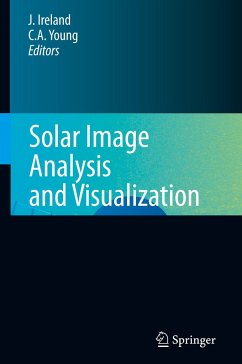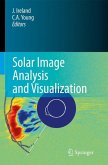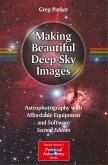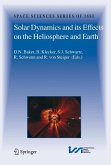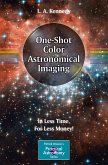This volume contains papers from the Third Solar Image Processing Workshop, held in Dublin, Ireland in September, 2006. Topics covered include image enhancement, automated feature detection, machine learning and visualization tools in support of solar physics.
The SECCHI A and B instrument suites (Howard et al. , 2006) onboard the two STEREO mission spacecraft (Kaiser, 2005) are each composed of: one Extreme Ultra-Violet Imager (EUVI), two white-light coronagraphs (COR1 and COR2), and two wide-angle heliospheric imagers (HI1 and HI2). Technical descriptions of EUVI, COR1 and the HIs can be found in Wuelser et al. (2004), Thompson et al. (2003), and De?se et al. (2003), respectively. The images produced by SECCHI represent a data visualization challenge: i) the images are 2048×2048 pixels (except for the HIs, which are usually binned onboard 2×2), thus the vast majority of computer displays are not able to display them at full frame and full r- olution, and ii) more importantly, the ?ve instruments of SECCHI A and B were designed to be able to track Coronal Mass Ejections from their onset (with EUVI) to their pro- gation in the heliosphere (with the HIs), which implies that a set of SECCHI images that covers the propagation of a CME from its initiation site to the Earth is composed of im- ?1 ages with very different spatial resolutions - from 1. 7 arcsecondspixel for EUVI to 2. 15 ?1 arcminutespixel for HI2, i. e. 75 times larger. A similar situation exists with the angular scales of the physical objects, since the size of a CME varies by orders of magnitude as it expands in the heliosphere.
The SECCHI A and B instrument suites (Howard et al. , 2006) onboard the two STEREO mission spacecraft (Kaiser, 2005) are each composed of: one Extreme Ultra-Violet Imager (EUVI), two white-light coronagraphs (COR1 and COR2), and two wide-angle heliospheric imagers (HI1 and HI2). Technical descriptions of EUVI, COR1 and the HIs can be found in Wuelser et al. (2004), Thompson et al. (2003), and De?se et al. (2003), respectively. The images produced by SECCHI represent a data visualization challenge: i) the images are 2048×2048 pixels (except for the HIs, which are usually binned onboard 2×2), thus the vast majority of computer displays are not able to display them at full frame and full r- olution, and ii) more importantly, the ?ve instruments of SECCHI A and B were designed to be able to track Coronal Mass Ejections from their onset (with EUVI) to their pro- gation in the heliosphere (with the HIs), which implies that a set of SECCHI images that covers the propagation of a CME from its initiation site to the Earth is composed of im- ?1 ages with very different spatial resolutions - from 1. 7 arcsecondspixel for EUVI to 2. 15 ?1 arcminutespixel for HI2, i. e. 75 times larger. A similar situation exists with the angular scales of the physical objects, since the size of a CME varies by orders of magnitude as it expands in the heliosphere.

